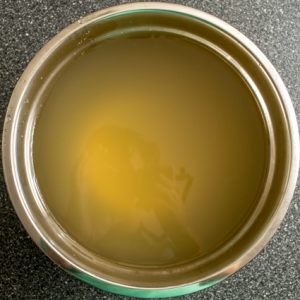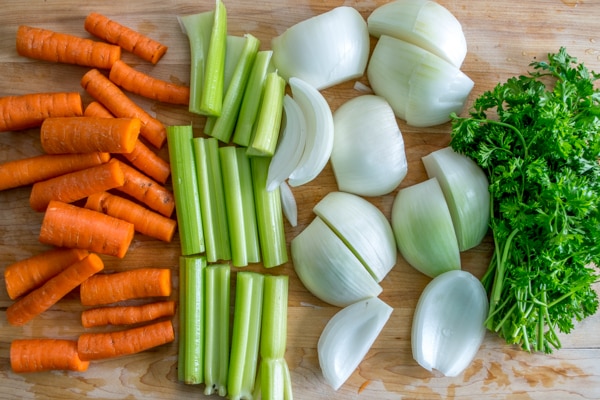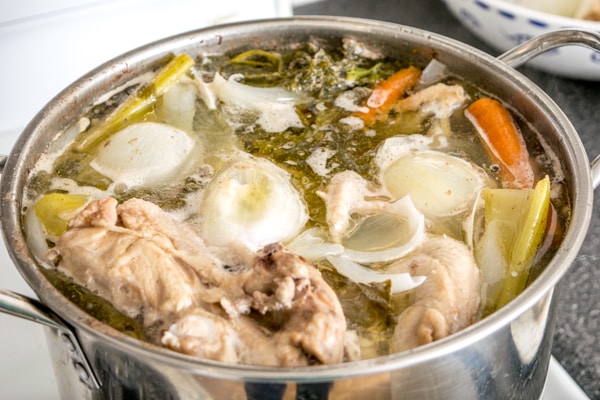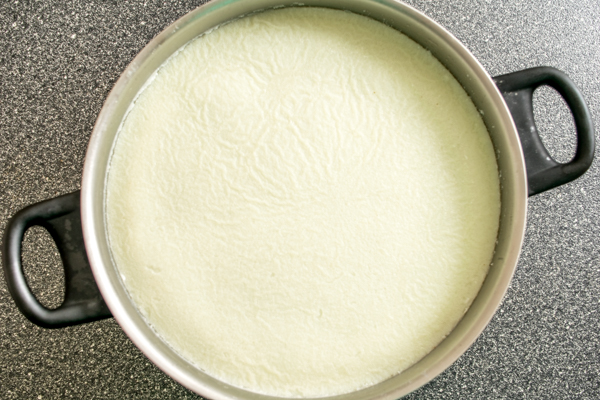Let's make some chicken stock!
Please keep in mind that there is lots of leeway on what goes in the stock pot. You don't need to worry about using exact ingredients as the simple act of making stock produces 90 percent of its goodness. The other 10 percent comes from following some very forgiving guidelines.
I usually just wait until I feel like my fridge has enough in it to make a batch of stock, it can be that simple.
For this batch, my freezer has four chicken carcasses all mashed up in a big clump of frozenness. Perfect! If you're not in the habit of buying meat on the bone you might start after making some stock. You can stash the leftover bones in the freezer and save them up for a big batch of stock.
This clump will go in a 2 gallon pot and make about 1.5 gallons of heavenly chicken stock.
These are carcasses with the legs, thighs, and breasts removed. Each weighs close to one pound, so we’ll have 4 lbs. of carcass and start with approximately 2 gallons of water.
This pot could easily hold 8 carcasses (8 lbs.) or more, so feel free to increase your bone-to-water ratio for a more concentrated stock.
I have onions, carrots, and celery on hand. That works out well because these three veggies are the traditional mirepoix for stock. I'll use 2 onions, 5 carrots, and 3 stalks of celery, all roughly chopped, along with a parsley bunch.
I’ll also add some bay leaves and peppercorns.
Dump everything in the pot and fill to the brim with cold water.
Bring to a boil (it might take awhile) and then reduce heat so that it's just barely simmering.
Along the way, you’ll see some foam rising to the top.
These are referred to as the impurities of the stock. Most people remove them, but it doesn't matter too much in the big picture. You can use a slotted spoon to skim off and discard the foam, but don’t worry about getting rid of every last bit.
Simmering time mostly depends on what else you have planned for the day. 60-90 minutes will produce a fully adequate stock, 2 hours or more will produce a more concentrated stock. Both will work.
After 90 minutes my stock looks like this:
And I am happy with that.
Strain through a fine mesh strainer into some mixing bowls. You can remove the big chunks with tongs before straining if you want.
Let cool on the counter for a bit.
See that layer shimmering on the top? That’s the fat.
People can’t agree on things like how much fat should be in the diet, so of course you’ll get differing opinions on how much fat should be in your stock.
I typically put this as is into the fridge and let it cool overnight, partially covered. Tomorrow the fat will have solidified on the top:
Some or all of this fat can be skimmed off and discarded.
Before portioning for storage I usually give it one last strain through a cheesecloth to remove any other bits.
And there you have it, some real deal chicken stock.
You can keep a few cups in the fridge for use over the next few days. The rest will freeze beautifully and your taste buds won’t know the difference a couple months down the road.
You may have noticed that we didn't add any salt!
You'll get differing opinions on this, but I usually don't add salt when making stock to leave plenty of seasoning wiggle room down the road -- dependent on which dish the stock is used in. But keep in mind that store-bought and butcher stocks will usually come loaded with plenty of salt.
Okay, that was easy right? Warm some of this stock up, add a pinch of salt, and take a taste to see how it compares to any other stock you're in the habit of using. Most likely you'll notice a massive improvement in flavor.

Use What You Have Chicken Stock
Ingredients
- 4 lbs. chicken carcass
- 2 gallons water
- 2 onions
- 5 carrots
- 3 celery stalks
- 1 parsley bunch
- handful of peppercorns
- 2 bay leaves
Instructions
- Roughly chop the veggies into evenly sized chunks.
- Add chicken carcasses and all of the above ingredients to the stock pot. Fill pot with cold water. Bring to a boil and then reduce heat to a simmer.
- Let cook for 1-2 hours. Strain off impurities of the stock if you want.
- Strain stock through a fine mesh sieve and let cool on counter for a bit before adding it to the fridge.
- Let the stock cool in fridge overnight. The next day you can strain the fat off and discard.
- Portion the stock out for the fridge and freezer (you can strain one last time with a cheesecloth if you want). I usually keep a few cups in the fridge and store the rest in the freezer.
Notes













